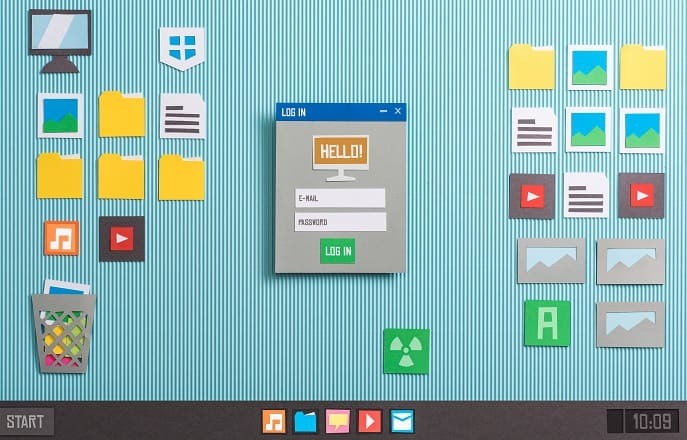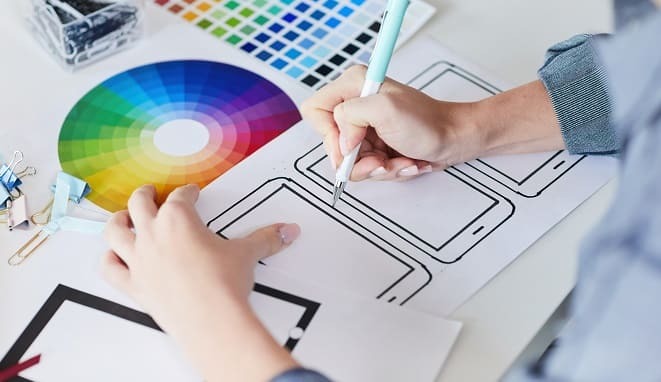
 Data Structure
Data Structure Networking
Networking RDBMS
RDBMS Operating System
Operating System Java
Java MS Excel
MS Excel iOS
iOS HTML
HTML CSS
CSS Android
Android Python
Python C Programming
C Programming C++
C++ C#
C# MongoDB
MongoDB MySQL
MySQL Javascript
Javascript PHP
PHP
- Selected Reading
- UPSC IAS Exams Notes
- Developer's Best Practices
- Questions and Answers
- Effective Resume Writing
- HR Interview Questions
- Computer Glossary
- Who is Who
What is the full form of GUI?
Introduction
GUI (Graphical User Interface) is a type of interface that enables users to interact with electronic devices through menus and icons. The primary goal of GUI is to make navigation easier and fun for the users.

It makes the apps friendlier and easy to use. Before GUI (Graphical User Interface), a Command Line Interface (CLI) was popular, which was difficult to understand, and all the commands were not familiar to use, which is why the GUI was introduced, bridging the gap. This interface has revolutionized the user experience, bringing ease of use to everyone around.
Definition of GUI
According to Gartner, GUI is " A graphics-based operating system that uses icons, menus, and a mouse (to click on the icon or pull down the menus) to manage the interaction with the system".
Apple Macintosh adopted it in the 1980s. Still, it was first developed by Xerox, and, at the time, Microsoft Windows was far behind as it required the user to type specific commands. But now, in the present era, Microsoft Windows is the most advanced and used in the whole world.
The GUI (Graphical User Interface) displays information and the user controls, unlike the text-based interfaces where the commands and data are strictly in the text, making the former easy to use. The user controls the GUI (Graphical User Interface) by a pointing device such as a trackball, mouse, or stylus or by fingers on a touch screen.
Components of GUI
The GUI (Graphical User Interface) mostly uses visual elements, that is why it has several components. Those are mentioned below
Window It is the component that defines the display that shows the information on the screen, and it is very easy to use Windows as the icons direct it. It can be closed and opened by clicking certain icons. They can also be dragged and moved to another place, and many windows can be open, which helps in accomplishing different tasks at once.
Menu The menu bar is present horizontally across the screen as a pull-down menu, offering users choices to select from the menu. The pull-down menu appears when the option is clicked from the menu automatically. The context menu appears when the user requires a specific action and clicks the right button on the mouse.
Icons In GUI, webpages, files, and programmes are shown as small pictures, and these pictures are known as the icon. These icons make it easier for the users to access them by clicking on them.
Controls GUI information is an application that can be read directly using the graphical control components. And these are known as widgets, and they are used for displaying similar icons and items and navigating the system using links and tabs using radio and checkboxes.
Tabs A tab contains a label text or a graphical icon associated with a window pane. It is also related to widgets, as multiple tabs allow users to switch between them. Many tabs can be opened in the browser, and users can switch between them and use them.
Dialog Box It is a pop-up box that assists the users in reacting to a specific action that was taken, and these boxes are given importance as the users have to deal with this before going to the next step.
Ribbon It is one of the upcoming features of the GUI and will replace the tool and Menu Bars on the top of the window; different commands represent the icons.
Advantages of GUI
The GUI (Graphical User Interface) has many advantages as it makes the work easier for the users by assisting in commanding actions by using only a few components.

Graphical The first advantage of the GUI is that it has a graphical representation. Users like visual elements that are pleasing to the eyes, and it engages the user in a more appealing way than regular command systems.
Simple to Understand and learn The systems designed to use GUI are easy and simple to learn with their graphical representation and standard icons common to most users. Using this system makes it simple to use the others as well.
User friendly The GUI is easy to use as the user only requires graphic elements to give commands.
User preference The GUI (Graphical User Interface) can be customised according to user preferences. It has options to change the theme colour, background and overall general look of the interface. It gives a personalised feel to the users.
Search The GUI system makes searches and inquiries very fast. The users give the commands, and the system immediately ushers a response.
Differently abled The GUI (Graphical User Interface) system is easier to use and accessible for users with physical impairments than the old command inline systems.
Examples of GUI
Modern interactive and operative systems use the GUI, which is present in everything, like ATMs and airport checkout. The GUI( Graphical User Interface) is all about user engagement as it uses graphic elements to facilitate and make the experience enjoyable. Examples are Mobiles, Laptops, Smartphones, Tablets, Computers, and gaming consoles. Human interaction occurs using the mouse, finger touch, stylus, keyboard, etc.
The GUI is an integral part of the daily lives of all humans now, and the use of the devices provides the relevant data that helps to make it more appealing and interactive.
Conclusion
The GUI is one of the most important inventions that has changed how users interact with technology; it has made it easier to understand and command the system and lessened the time it takes to complete the task. It enables control and clarity and increases engagement with visually appealing graphic interfaces. And it has also helped in multitasking.
FAQs
Q1. How many types of windows are there in the GUI ( Graphical User Interface)?
Ans: There are many types of windows in the GUI( Graphical User Interface) container window, child window, text terminal window, and message window.
Q2. In what browsers are Tabs used?
Ans: Tabs are used in many browsers like Internet Explorer, Mozilla Firefox, and Microsoft Windows, making it easier for users to multitask.
Q3. What is the best Programming language for the GUI?
Ans: The best Programming language for the GUI ( Graphical User Interface) is C # or Java. Python and HTML5/ Javascript can also be used.

